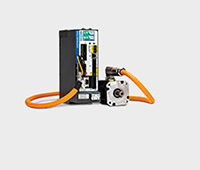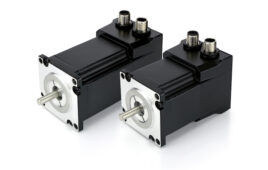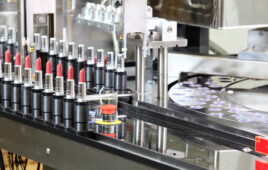Finding energy efficient manufacturing processes is a top priority for companies today, but the push for green, environmentally friendly alternatives is still a relatively new trend in the United States. The movement actually began in the European market decades ago.
Dale Boyke, distribution market manager, Parker Hannifin Accumulator Cooler Div., said that European manufact-uring companies sought energy efficient products and solutions long before the U.S. due to necessity.
“We didn’t talk about energy conservation or hydraulic pump efficiency in America in the ’70s and ’80s,” Boyke said. “But during that time, design criteria in Europe were already changing. Energy has always been more expensive there, so conservation initiatives became a factor much earlier.”
 Boyke said it’s not uncommon to see energy efficient products that have been sold in Europe for years just now making their way to America.
Boyke said it’s not uncommon to see energy efficient products that have been sold in Europe for years just now making their way to America.
One such product is finding traction in the automotive industry after its recent introduction to the U.S. The brazed plate hydraulic/water cooler is increasingly being used as the hydraulic cooler of choice to replace traditional shell- and tube-styled coolers due to its reduced water intake requirement and size.
This attribute is beneficial to the automotive industry. Rising fuel costs, technological advances, stiff government regulations and increasing demands for limited energy resources have automotive manufacturers looking for ways to build efficient, high-quality cars using the most cost-effective production methods available.
Water consumption is one of the industry’s major operating expenses. It takes roughly 40,000 gal of water to manufacture a single domestic car, and many automotive manufacturers build thousands of cars per day. The overhead cost for that one resource alone greatly impacts profits.
A primary source of water consumption is found on hydraulic machinery in automotive manufact-uring plants. The machinery needs hydraulic coolers to dissipate extreme heat and prevent machine damage created by the power source. These coolers generally use large quantities of water to carry heat out of the machines. Brazed plate coolers provide much greater cooling efficiency using just half the water supply.
“These coolers significantly reduce the overhead costs of water, whether manufacturers have to buy water or pay to get rid of water.” Boyke said. “Even companies that use cooling towers to increase hydraulic cooling efficiency can reduce the cost of operating the towers.”
The cooler plates are stainless steel, brazed with pure copper. A cooler could have anywhere from 10 to 200 of these plates, depending on the application. In addition, brazed-plate coolers have two ports for fluid to flow through, resulting in two separate paths or circuits. Hot oil touches the metal plates as it flows from the pumps and valves through the cooler core. The 316 stainless steel plate material acts as a high-efficiency heat conductor, transferring the heat from the higher temperature fluid to the lower temperature fluid through the metal. The longer the oil touches the metal, the greater the transfer of heat.
“The hot oil, or various other fluids that need to be cooled, flows into the cooler at system temperatures and comes out 10° to 30° cooler,” Boyke said. “The water goes in at 80° to 85° and comes out at 100° to 110°. This type of unit is an effective way to transfer the system-created heat to the water and keep the hydraulic system cool.”
Parker Hannifin’s brazed plate cooler model, the 316 stainless steel OAW series (known as the PWO series in Europe), is designed to produce turbulent flow to ensure the oil is constantly churned. The more turbulent the flow, the more it touches metal and the better the heat dissipation. The coolers were designed to optimize this fluid path through the unit, forcing the fluid to touch the metal as much as possible to enhance heat transfer and reduce the risk of clogging.
The stainless steel, copper-brazed design makes the coolers much more compact than shell and tube coolers of the same capacity. With a possible 85 to 90% reduction in volume and weight, operators experience greater design freedom and reduced installation costs.
Parker Accumulator Cooler Div.
www.parker.com/accumulator
Filed Under: Hydraulic equipment + components, Energy management + harvesting, MOTION CONTROL





Tell Us What You Think!